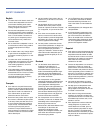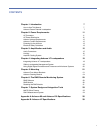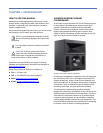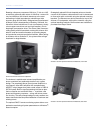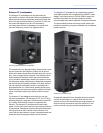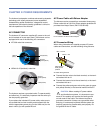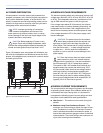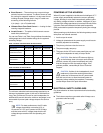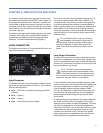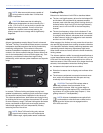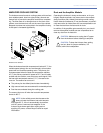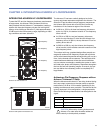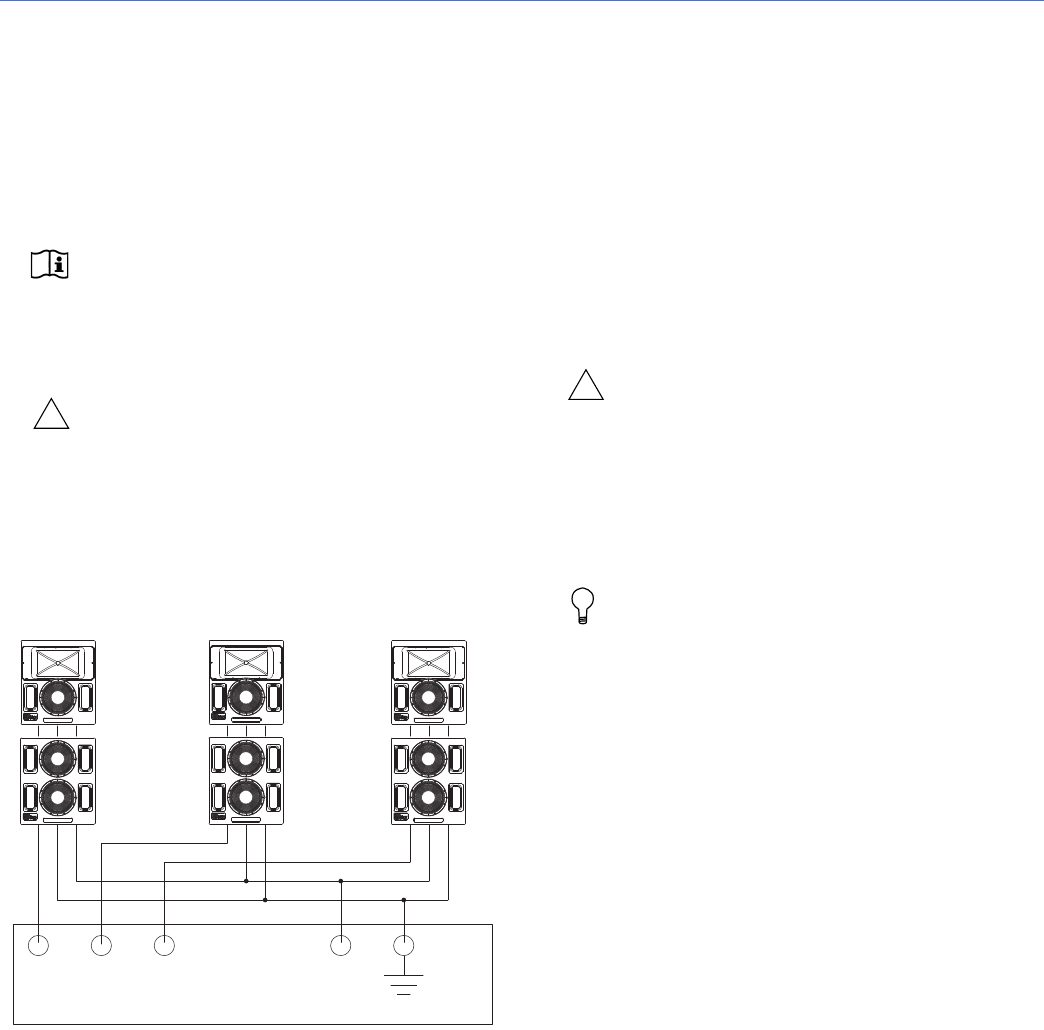
CHAPTER 2: POWER REQUIREMENTS
12
AC POWER DISTRIBUTION
All components in an audio system (self-powered loud-
speakers, processors, etc.) must be properly connected to
an AC power distribution system, to ensure that AC line
polarity is preserved and that all grounding points are con-
nected to a single node or common point using the same
cable gauge as the neutral and line cables.
NOTE: Improper grounding of connections
between loudspeakers and the rest of the
audio system may produce noise or hum, or cause
serious damage to the input and output stages of the
system’s electronic components.
CAUTION: Before applying AC power to any
Meyer Sound self-powered loudspeaker, make
sure that the voltage potential difference between the
neutral and earth-ground lines is less than 5 V AC.
Figure 1 illustrates a basic three-phase AC distribution sys-
tem with the loudspeaker load distributed across the three
phases. All loudspeakers are connected to common neutral
and earth-ground lines.
ACHERON VOLTAGE REQUIREMENTS
The Acheron operates safely and continuously when the AC
voltage stays within 85–134 V AC and 165–264 V AC at 50
or 60 Hz. The loudspeaker allows any combination of volt-
age to GND (neutral-line-ground or line-line-ground).
If the voltage drops below 85 V (brownout), the Acheron
uses stored power to continue operating temporarily; the
loudspeaker will shut down if the voltage does not rise
above the low boundary before the stored power is used.
If the voltage rises above 275 V, the power supply could
become damaged.
CAUTION: The power source for the Acheron
should always operate within the required volt-
age range, at least a few volts from the upper and
lower ranges. This ensures that AC voltage variations
from the service entry — or peak voltage drops due
to cable runs — will not cause the loudspeaker’s
amplifier to cycle on and off or cause damage to the
power supply.
TIP: Since the Acheron does not require a dedi-
cated neutral line, and it can tolerate elevated
voltages from the ground line, it can be connected to
line-line terminals in 120 V, 3-phase Wye systems.
This results in 208 V AC between lines (nominal) and
therefore draws less current than when using 120 V
AC (line-neutral). Make sure that the voltage remains
within the Acheron’s recommended operating win-
dows (85–134 V AC and 165–264 V AC). The ground
line must always be used for safety reasons and the
line-to-ground voltage should never exceed 250 V AC
(typically 120 V AC from line-to-ground).
ACHERON CURRENT REQUIREMENTS
The current draw for the Acheron is dynamic and fluctuates
as operating levels change. Since different cables and cir-
cuit breakers heat up at varying rates, it is important to
understand the following types of current ratings and how
they affect circuit breaker and cable specifications.
■ Idle Current — The maximum rms current during idle
periods.
■ Maximum Long-Term Continuous Current — The
maximum rms current during a period of at least 10 sec-
onds. The Maximum Long-Term Continuous Current is
used to calculate temperature increases for cables, to
ensure that cable sizes and gauges conform to electrical
code standards. The current rating is also used as a rat-
ing for slow-reacting thermal breakers.
Figure 1: AC Power Distribution System
!
Line 1
Line 2 Line 3
Neutral
Earth Ground
!



